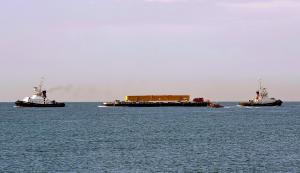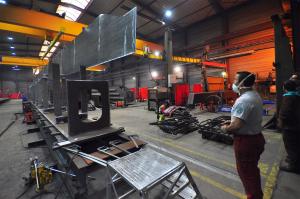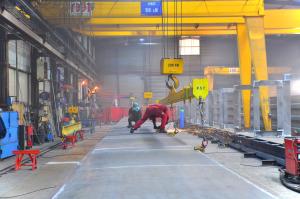The making of a steel girder
The overhead crane that gave its name and reputation to the company still stands in one of the factory workshops in Villefranche-sur-Saône, near Lyon, France. Back in the 1950s, the crane's innovative design had won first prize at one of France's largest post-war industrial exhibits.
Although REEL has designed and manufactured cranes of all sizes and purpose, the order for a double 750-tonne lifting system was a first. "Until now, a standard order was in the 160- to 180-tonne range," explains Benoit Nakul, who oversees ITER fabrication for REEL. "But whatever the lifting capacity the architecture is basically the same. It's a matter of calculating how to spread the load."
The girders that come out of the factory have a slight, deliberate curvature. This "counter-boom" is precisely calculated to allow the girders, once in place, to straighten under their own weight. The design still allows for some flexibility as each crane will lift a wide range of loads, from a few dozen to many hundreds of tons.
(1) The NKMNOELL-REEL consortium is formed by NKMNoell Special Cranes GmbH, Germany and REEL S.A.S., France




